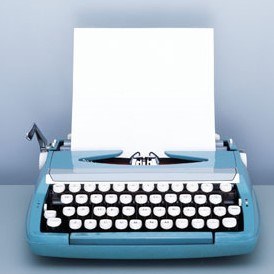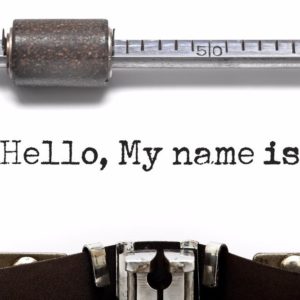

Regards, Best Wishes Or Cheers – What’s Your Sign-Off?
How many emails do you send in a week? I’m going to guess it’s a fair few because, for the people I speak to, it’s still the #1 channel for business communications. (Although messaging directly on LinkedIn seems to be gaining favour.)
Actually, what I really want to know is:
How do you sign off your emails?
My reason for asking is, in my mind, even something as simple as your choice of words when you conclude an email can convey subtle hints to your personal brand – so it’s worth putting some thought into.
Our survey says…
When I recently asked that same question on LinkedIn I received a variety of replies, nearly all of which featured the words ‘regards’, ‘best’ and ‘wishes’ – the standard building blocks of a sign-off.
Interestingly, the most favoured wording by a country mile was ‘Kind regards’ – subconsciously telling the reader that the sender is kind. Although I’m not sure what it says about me that I have never, ever used this phrase. (A variation on this I once noticed on an email from my contact Jane Barrett was ‘Warm wishes’ which, having met her, totally matches the warmth of her personal brand.)
Then came a cluster of phrases that were equally favoured by respondents: ‘Best wishes’, ‘Best regards’, Regards’, ‘Cheers’ and ‘All the best’. That last one happens to be my sign-off of choice, because high standards are important to me, so I give a subtle signal with my wording.
Changing to suit your audience
Something else that came out of my enquiries was that people – just as I do – will change their sign-off as their relationship with the recipient evolves. They’ll start with something formal like ‘Regards’ then move through the spectrum towards informality, such as ‘Cheers’, as they get to know the other person. (If you ever get a ‘Ciao for now’, ‘Laters taters’ or ‘TTFN’ from me, we’ve definitely reached pal status.)
But what interested me more was that some people said their nationality played a part. For instance, a German said ‘All the best’ would be too informal for her liking, while an American said ‘Sincerely’ was often used in the States.
Don’t take short cuts
Whatever you do though, make sure you take the time to give a full sign-off. A contact of mine recently emailed to share a message he’d received with the sign-off ‘BR’ (which we both assumed represented ‘Best regards’ but could have meant anything: ‘Buttered Radishes, ‘Bravo Romeo’ or even ‘British Rail’). We both felt this was a little too slapdash and had created a negative impression of the sender.
Passive activism
Of course, your sign-off doesn’t just have to be a written goodbye. It can also be a subtle call-to-action, such as the reasonably obvious ‘Look forward to hearing from you’. Or my preferred wording, particularly when I’m asking the recipient for something, is ‘Thanks in advance’.
Taking that a step further, some great advice from Andy Bounds that I received in his Tuesday Top Tip was: Finish emails with ‘Please can you do X’ not ‘Should you have any questions, please do not hesitate to call’ (trust me on this: they won’t call). It’s a much more active way of getting what you need from the other person.
If in doubt
My last bit of advice is, if you’re in any doubt how to sign your emails, take your lead from how the recipient signs theirs. I had a mentor called Philip for whom brevity was his byword and it didn’t take me long to realise that signing himself ‘P’ was his way of telling me that. So I changed my usual writing style to be more concise (well, by my standards, maybe not his) and always signed off ‘J’.
What’s your sign-off of choice – and more importantly, why? What do you think it says about your personal brand? Or have you given it zero thought until now? As always, there’s a lonely little comment box below just craving your attention 😉 so why not show it some love by leaving a message?








Hi Jennifer,
Interesting discussion as always. I think its just as important how people start the email. It frustrates me when they cannot add your name or a long email trail with FYI
As you describe this is often the largest communication method we use with some of our contacts. Its made me think as I always sign off many thanks. But I may consider alternatives now. Thank you as always 🙂
I’m glad it’s raised some thoughts Helen. Maybe email salutations will be another blog post down the line.
Another thought provoking post Jennifer. I use a spectrum of sign-offs from ‘regards’ through ‘kind regards’ to ‘best wishes’ and ‘cheers’ (and for the fortunate few ‘love’). Thinking about it, I tend towards the body language technique of mirroring to build feelings of affirmation and empathy. My personal dislike is receiving a sign off that is a template – a ‘Hi Denis’ opening line needs to end with ‘Jennifer’ not ‘Jennifer Holloway’. I’m now looking forward to a future post on how to open an e-mail (or have I missed it?).
You’ve not missed a blog about opening lines, but it’s definitely in my ‘ideas’ folder for future use 🙂
Thanks Jennifer. I’m usually a Kind Regards guy. I also add “keep smiling and have an amazing week” inline with our purpose. I do like Andy Bounds call to action advice Turning this around, what alternatives would you give for email intros? I’m getting bored with “Hope you are well/Hope all is well” etc?
You’re the third person to ask about email intros so I’ll move it up my list of blog ideas and hopefully post something soon. As many heads are better than one, I’ll also open it up to my LinkedIn community to get their input.
I accidentally finished a telephone call last with a company director with “Love you, bye!” recently.
Cue massive panic on how to deal with it!
The organisation I work for is pretty informal, and sign off is usually ‘cheers’ as standard. Lucky for me, that’s my preferred sign off anyway as long as I have good rapport with the receiver. It also fits with my informal brand, although I’d never really given it much thought until now. Thanks for the brain food!
Argh! I feel your embarrassment! Happy to have supplied this morning’s brain food. 🙂
Jennifer my ‘sign off’ is the very ordinary ‘Regards’ – however, particularly if my email concerns an action required or information received from the recipient then I always add ‘Thanks / Thanks in advance’ above the final ‘Regards’. My signature is pre populated within my email, and I did toy with the idea of inserting the ‘Thanks in advance’ with the pre populated signature, but wanted it to remain sincere for those occasions when it is required, not a ‘one size fits all’
Thanks in advance is a very useful one.
[…] couple of posts ago, I wrote about how something as simple as the way you sign off your emails could be giving subtle hints to your personal brand – intentionally or unintentionally. This […]